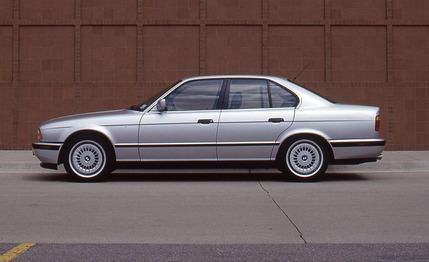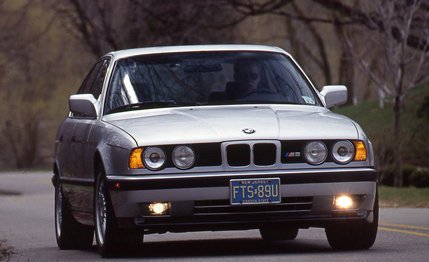
 Archived Road Test
Archived Road Test
This litigious society of ours puts warning labels on everything from lawn mowers to baby toys. So we suggest one for the windshield, near the driver's line of sight, of every 1991 BMW M5 sold in the U.S.A.: "WARNING: Attempts to appreciate this automobile's capabilities upon the public highways will have your license collecting points faster than the Boston Garden scoreboard."
No one would pay one whit of attention, naturally. But it would only be fair. Because the M5 is so wickedly swift and unflappably balanced that it almost needs an autobahn to be truly enjoyed. (Maybe the foreign-delivery plan should be mandatory for this car.) The M5 is, you see, the quickest and fastest regular production four-door automobile this magazine has ever tested. Aside from the odd AMG-class mutant, it 's the strongest four-door, period.
And sheer power may not even be the M5's best quality. Its true best quality may be just that: its pure best-ness. Given some perfectly reasonable criteria, BMW's new-generation M5 just might be the best car in the world.
Take the engine, for starters—a crown jewel of a powerplant. The BMW S38 in line six began life as the 24-valve special powering the marvelous but star-crossed 1978 M1 supercar. More than just a twincam-head conversion on the true-blue BMW 3.5, it included a juggling of bore and stroke dimensions (increased and decreased, respectively) for a more oversquare configuration. With mechanical fuel injection (and of course, no catalytic convener), it produced 266 hp.


Nearly a decade later, the engine came to this country for the first time (not counting gray-market M1s) in a pair of M-Sport variants of existing BMW road cars. Both in the M6, which was a pumped-up 635CSi coupe (C/D, July 1987), and in the M5, a similarly powered 5-series sedan (C/D, December 1987), the four-valve-per-cylinder six employed electronic injection and a catalytic convener to make itself welcome on our shores. But 26 hp went out the tailpipe in place of the dreaded pollutants: the U.S. rating was 256 hp. And fuel economy was none too good, with EPA city/highway numbers of 10/19 mpg.
So the engineers over at Motorsport (BMW's go-fast skunkworks) had their mandate: Make a modern S38 that tops the power output of the original engine, meets current American emissions standards, and does it all on less fuel.
A little extra displacement came first. Holding the original 93.4mm bore (compared with the SOHC 3.5's 92.0) but taking stroke back up to the 3.5's 86.0mm (from 84.0) netted 3535cc, enough for BMW to refer to this as a 3.6-liter engine. (The 3.5 measures a true 3430cc; the original S38 displaced 3453cc.)
Compression has risen to 10.0:1 (The old S38's was 9.8:1; the current 3.5's is 9.0:1), and new camshafts give more valve lift and duration. Intake and exhaust systems breathe more freely, and a flapper valve in the middle of the intake plenum varies the effective volume of that chamber to harness resonance wave activity and fatten the torque curve below 4120 rpm and above 6720. A new crankshaft, which is lighter and stronger, and stiffer valve springs permit the new, higher redline of 7250 rpm (up from 6900).